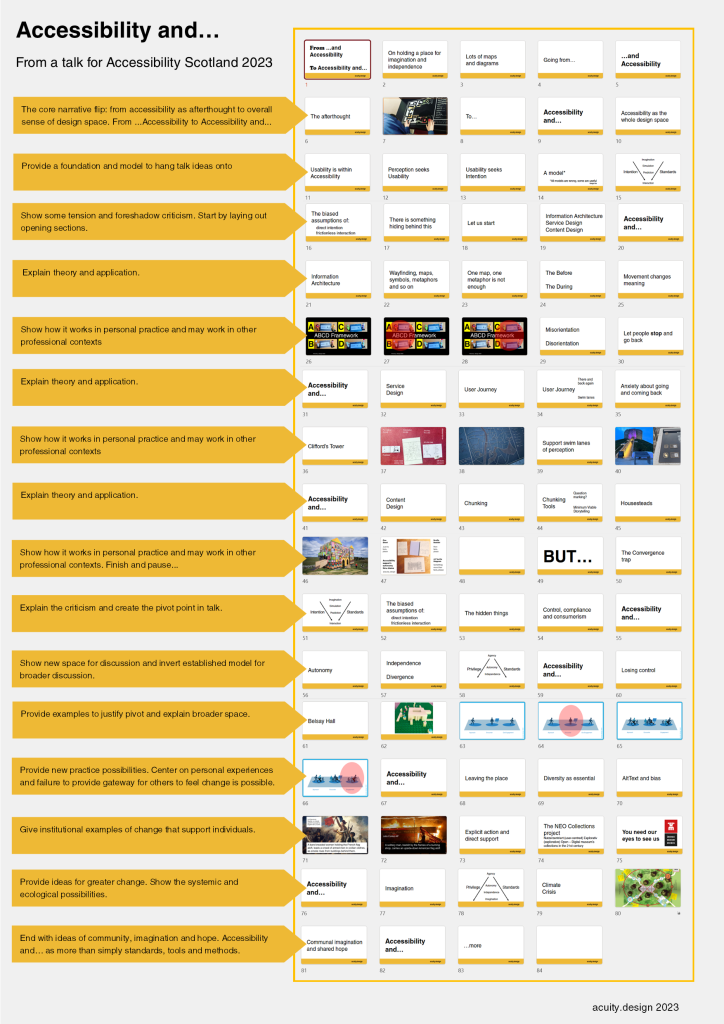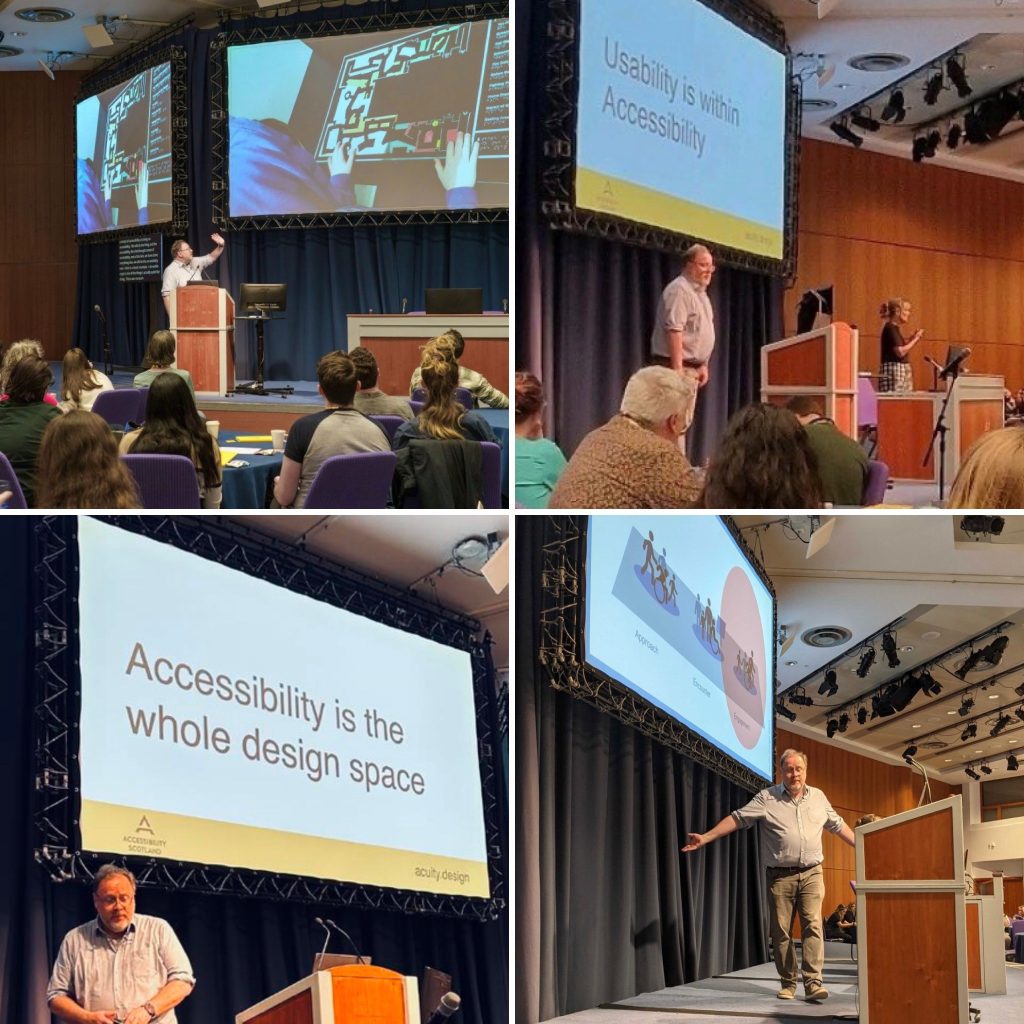I was invited to speak at Accessibility Scotland last week. Someone had to drop out and they needed a quick replacement. I was glad to help out.
Update
You can watch the original talk now on Vimeo.
I needed to write a new talk quickly tho. I prefer to run workshops to explore problems but I will do talks if I can find something that appears helpful to an audience.
I chose to use this opportunity to examine some of the work I’ve done over the last 10 years and use projects outputs and experiences to talk about my sense of self in being involved in the evolving meaning of accessibility and also to offer a few practical pointers.
I wanted to talk about using accessibility to enable autonomy and independence and becoming more aware of checking who does the work from a privilege and living experience perspective.
Designing a talk
The conference requested a 45-50 minute talk. From experience I calculated that is about 80 to 90 slides. I do not write out my talks (and infrequently practice them). The slides are both the content for the audience and the cues for my adlibbing.
The image below is an A3 poster of the slides and an explanation of the talk design. You can download the poster from Dropbox Accessibility And.. A3 Poster.

Accessibility And…
The primary narrative flip was to shift from talking about how accessibility is always framed as an afterthought to accessibility as the central deign element. I was helped on the day by Craig Abbott’s earlier talk on the radical increases in costs the further along a project goes without either considering or correcting for accessibility issues.
Making accessibility the foundation is good business.
A model as a map and place for narrative foreshadowing
Providing a model early in a talk is way of offering a basic cognitive map to the audience. It may not make complete sense to them yet but it is an artefact for alignment and boundary setting at the start.
I used this time also to foreshadow the next narrative flip. To be clear that the model seemed good but there was also something awry.
…Information Architecture, Service Design and Content Design
The next few parts of the talk are loops of showing how other professional tools are used within accessibility. Placing Information Architecture, Service Design and Content Design deliberately as subordinate to Accessibility.
Each loop offered an explanation, some methods and some project examples. I do not work in digital accessibility (the core audience for the conference) so all of this is using our artefacts as metaphors and our experiences as allegories.
- We made this and experienced this – you can make that and experience that.
- This has been done – it can be done.
BUT…
Having settled people into some comfortable loops, it is time for the second narrative pivot.
It is time for the BUT… and to explain the problem that was foreshadowed earlier. Don’t create a sense of tension without knowing when you will relieve it. If the gun is put on the table, then then gun must go off (as Chekhov pointed out when writing “Remove everything that has no relevance to the story”).
Having said the model was flawed. The flaw must be explained. The biases in the perceptual model need clarifying and the institutional problems stated.
This enables the model to be flipped and the main goal of the talk to emerge.
It is a talk about design for autonomy and the need for diversity.
Whose autonomy, whose diversity?
This is where things get tricky and personal. Two of the previous talks were written and delivered by people who had living experience of neurodiversity as neurodivergent individuals. This centring of personal to professional is quite important. I do not have such a direct linkage of professional expertise to lived experience and this has become increasingly obvious as problem.
I wanted to use the talk to examine my emotional sense of this intersection of expertise and experience.
I have worked on a few projects lately that seemed relevant as they dealt directly with historical issues of bias in who tells stories of museum artefact histories and who should be not merely consulted (in a codesign sense) but also paid and centred in the projects.
Swearing
I was the only speaker on the day to swear.
I do not know if other speakers wanted to but I knew I had to.
I had to say that “I am the wrong fucking person for this project”. I wanted to use shock to make people imagine that they could say that about themselves or to a professional colleague. It is not an easy topic and it needs highlighting.
…Imagination and more
The talk now begins to wind up and using some of the Design Council experiences I had lately with Systemic Design in the Climate Crisis was a way of ending with a sense of the vastness of the problems we all face, the importance of diverse communites and divergent imaginations in seeking solutions and final Accessibility And… more.
A talk delivered

I wrote the talk last Wednesday and delivered it on Friday in Edinburgh.
The pictures above were taken by people who attended the conference (including Beverley Newing, Wojtek Kutyla and Ali Wright).
I wrote this post to both explain and better understand the content and purpose of the talk.